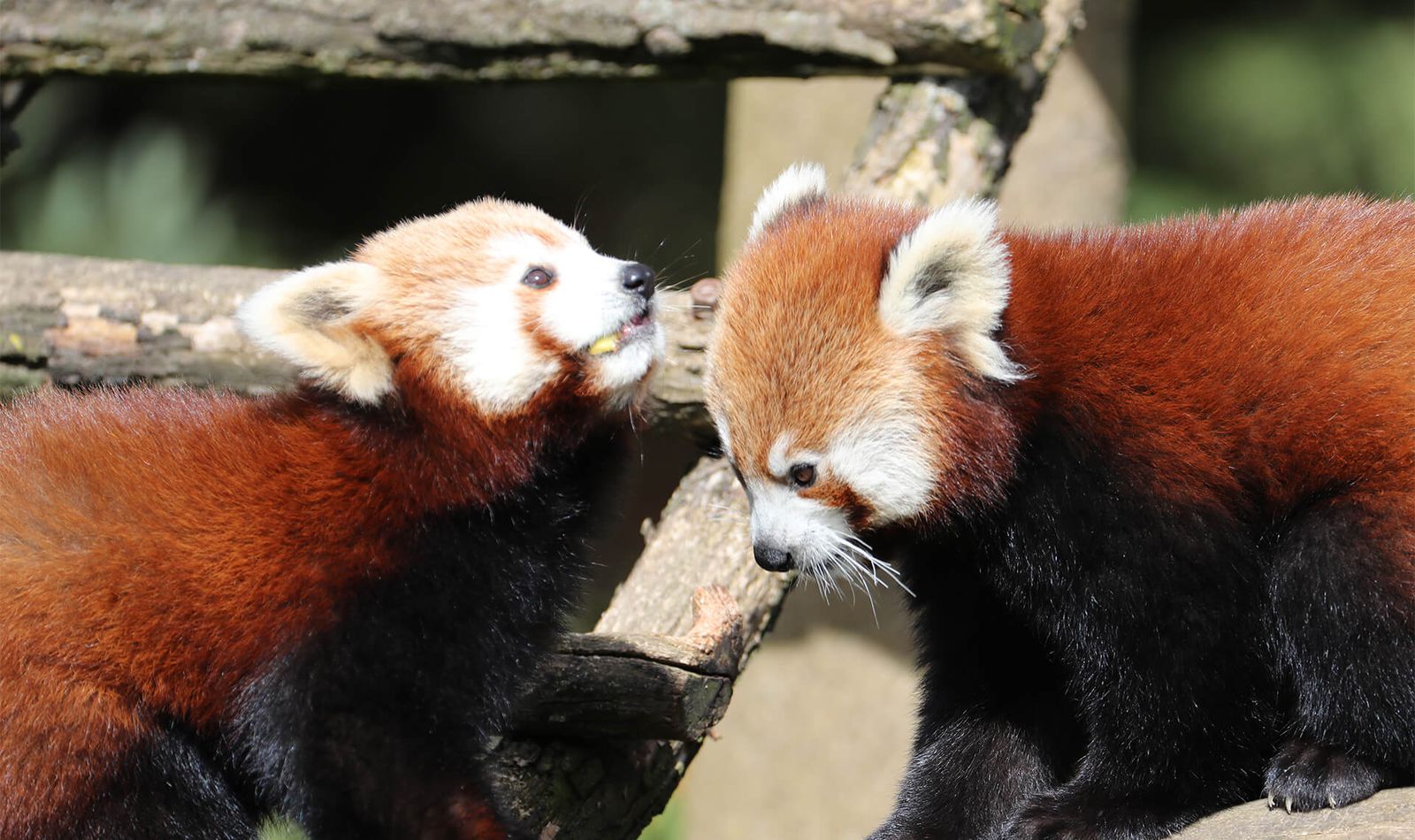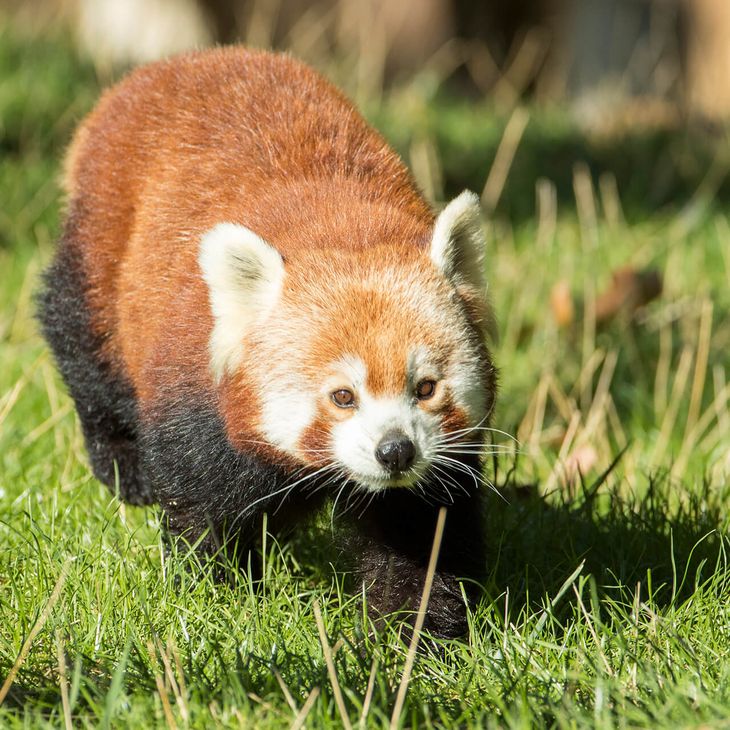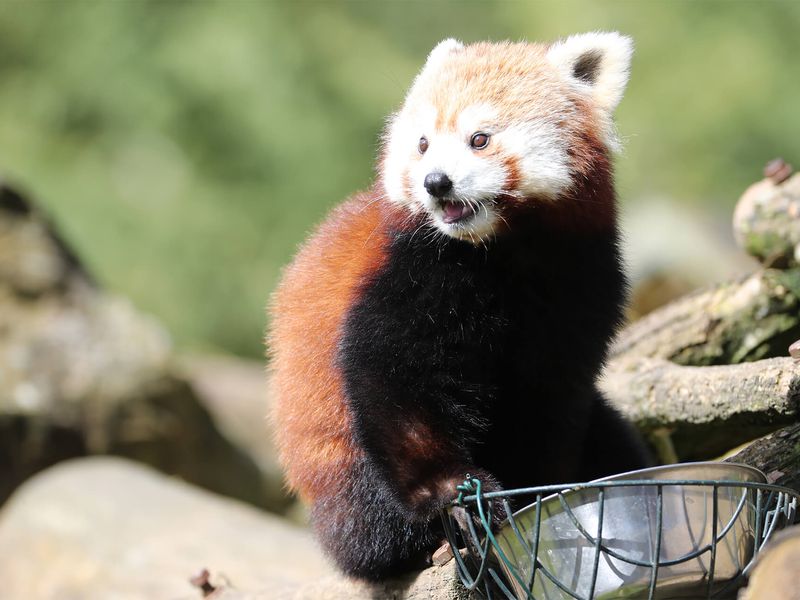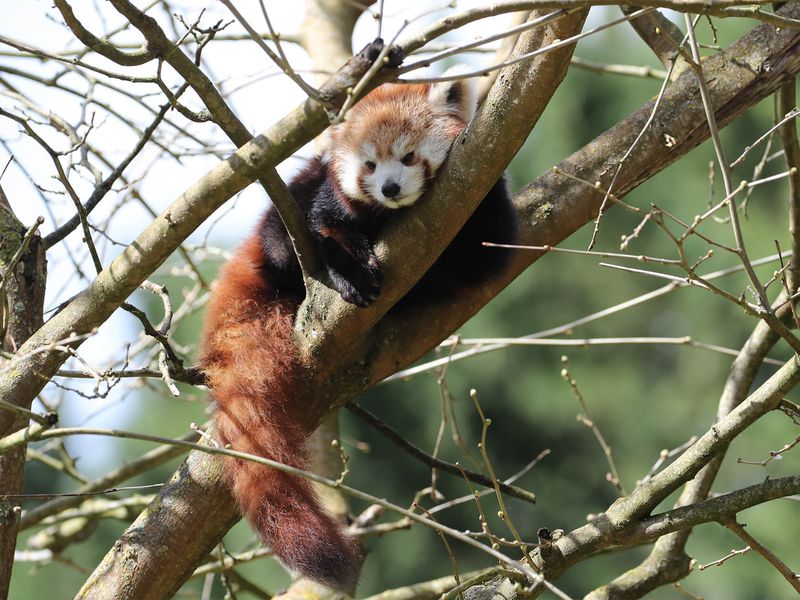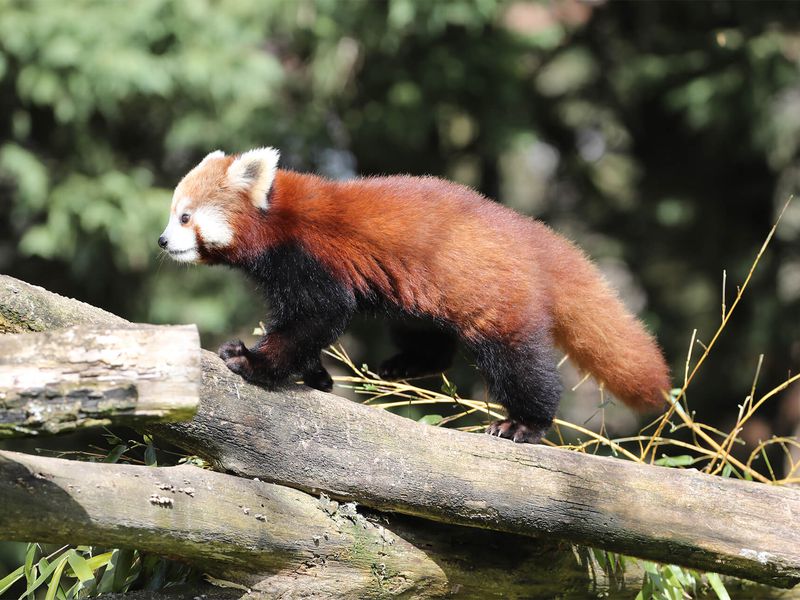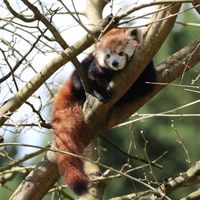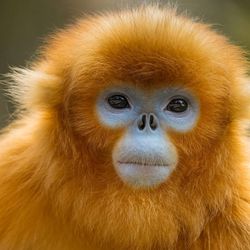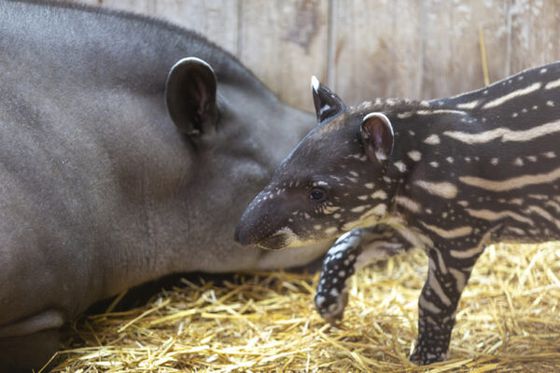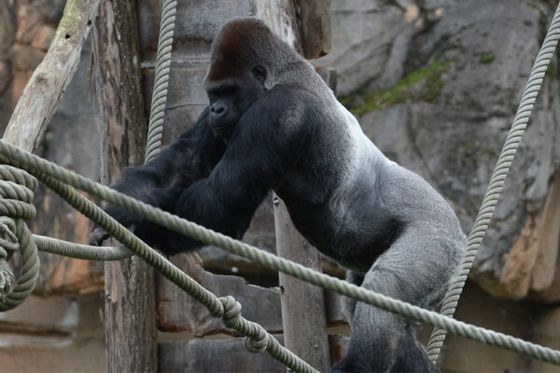« Like the giant panda, the red panda is very fond of bamboo. »
A species apart
The only representative of its family, the Ailuridae
Though sometimes called the lesser panda, the red panda is not closely related to giant pandas. The giant panda is not the only species that we wrongly associate this adorable little climbing animal with. In English, one of its nicknames is the fire fox. Ailurus Fulgens, the species’ scientific name, translates as “shining cat”… and in China, it is referred to as the “little bear-cat”. Which species do you think the red panda is closest to genetically? It may seem hard to believe but the red panda is, in fact, closer to the raccoon, the skunk, and the weasel!
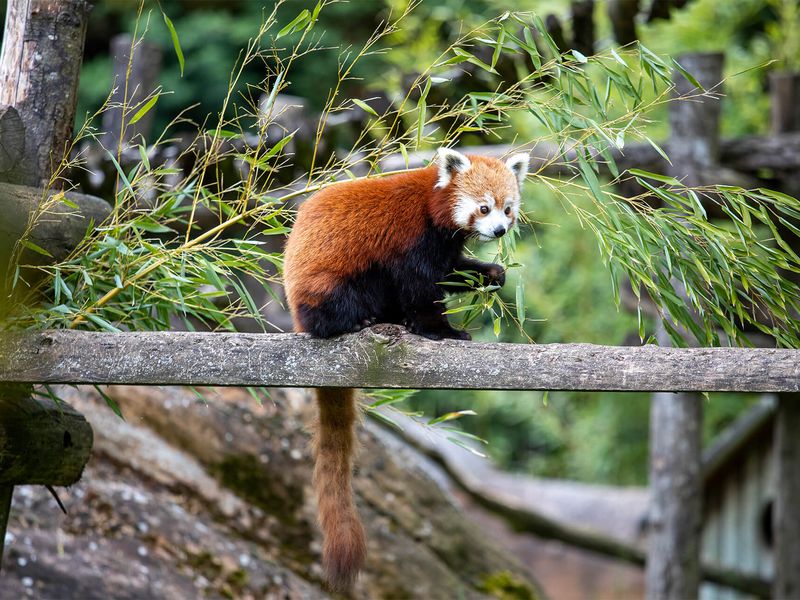
Did you know?
Bienvenue Kyra !
Son prénom a été choisi par la communauté
Notre bébé panda roux a enfin un prénom ! Grâce à vous, elle s’appelle désormais Kyra. Un immense merci à tous pour votre participation et votre enthousiasme !
Beauval Nature contributes to the preservation of the red panda
The red panda is classified as a “vulnerable ” species by the IUCN, and is threatened by many factors, such as agricultural expansion and the degradation of its habitat, particularly due to forest fires.
The Red Panda Network, an NGO, has developed a community conservation project involving 42 Nepalese forest guards from local communities. Their missions include monitoring and conducting censuses on populations of red pandas, as well as fighting forest fires.Beauval Nature has been contributing financially to this conservation programme since 2014.

Inès Arrived at Beauval in Spring 2018
Inès arrived at Beauval in the spring of 2018, just before her first birthday, alongside a young male named Browny!
In June 2020, Inès had her first baby with Browny, a female named Mei, who moved to Amiens Zoo in April 2021. They also became the parents of Kamala and Nuo, born in 2021, and Darshan, born in 2023. All have since moved to other zoos to start their own families.
Currently, in addition to Inès and Browny, you can see Mushu and Aksou, two young males born in June 2024.
We hope for a long and wonderful lineage for our beloved couple!
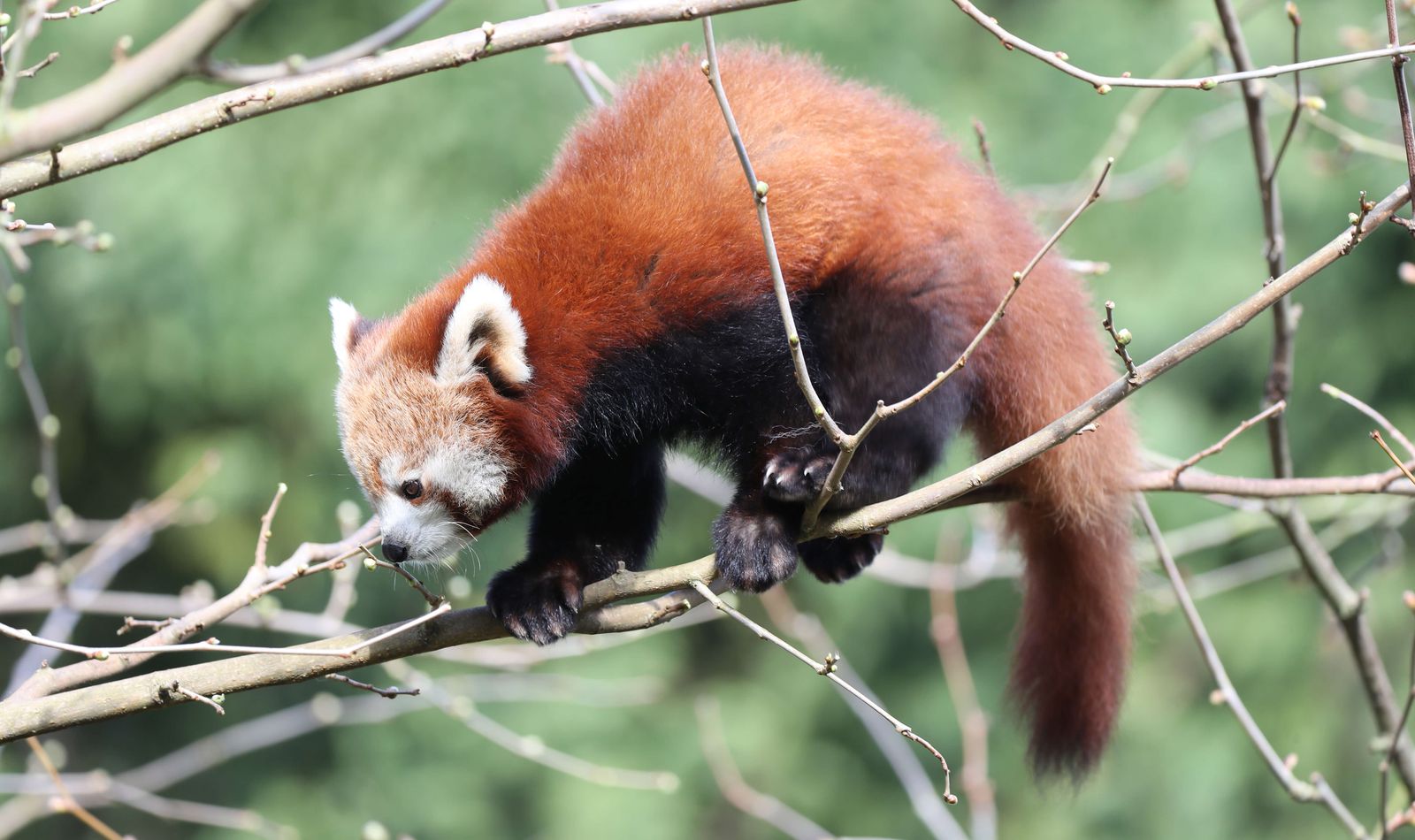

Sponsor our red pandas
Establish a strong bond with your favourite animal whilst supporting conservation programmes through the Beauval Nature association!
Endangered
Learn more about the species
-
OmnivoreDiet
-
4½ monthsGestation period
-
1 to 4 youngLitter size
-
ForestsHabitat
Heavy-duty fur
Bamboozled
Red panda reproduction

Take full advantage of the experience thanks to our mobile application!
Find out more
